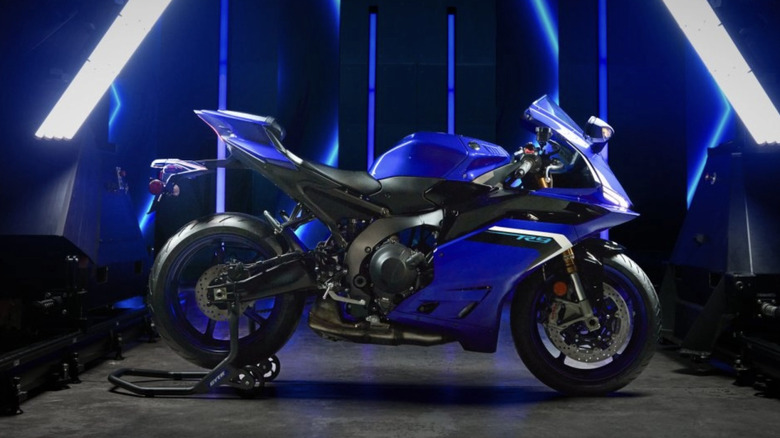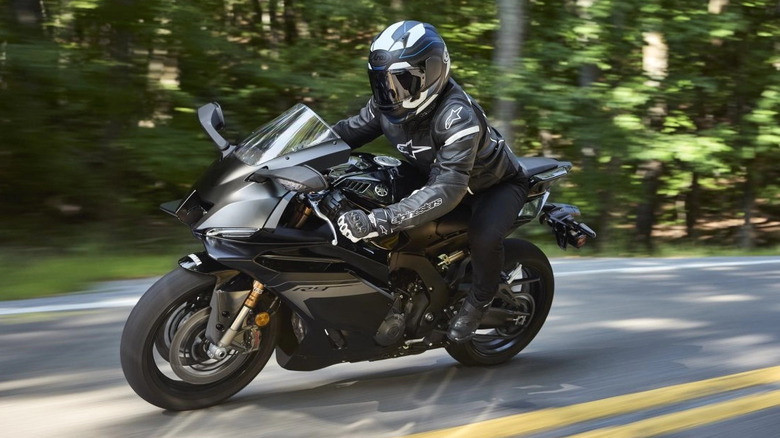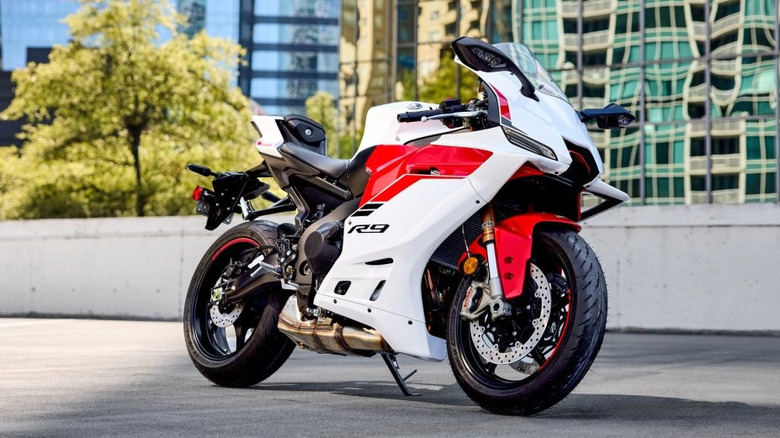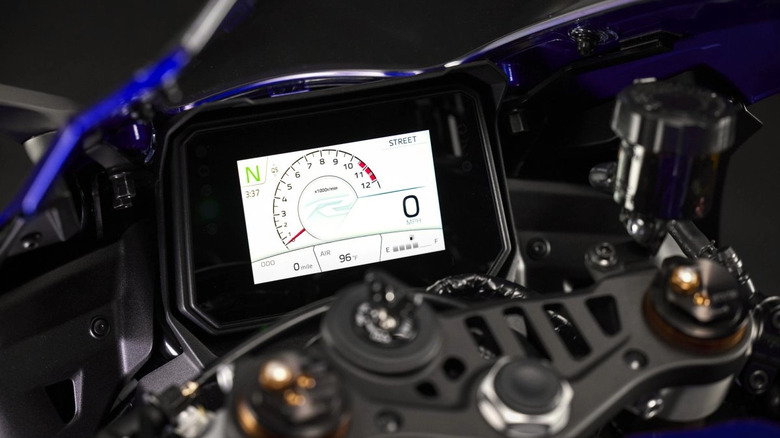The New Yamaha R9 Is Here: Key Features, Specs, And Pricing Details
For a while now, all we've been able to do when it comes to the Yamaha R9 is speculate. Yamaha killed off the R6, one of its most legendary sports bikes, a few years back and the R1 is likely on the chopping block soon, so we've all been guessing as to what will fill the epic sport bike-sized hole in Yamaha's lineup. Now the time has come to finally pull the sheet off the R9 and see what the facts are — and it turns out, we weren't very far off with most of our predictions.
The R9 is an all-new motorcycle for Yamaha, using some pre-existing components from current motorcycles in the lineup, but occupying a whole new space amongst its sport bikes. The model uses a known engine, some known suspension components, and familiar styling from its already-popular sport bike family. Essentially, the R9 is an excellent addition to the current lineup of R-Series motorcycles from Yamaha, sliding in next to bikes like the R1M, R1, R7, and R3. The model is priced between the R7 and the R1, with performance that fits nicely in that space, too, and it offers a number of modern features that should make it seriously popular at your next local bike night or at any upcoming track event.
Power brought to you by Yamaha's 890 cc three-cylinder CP3 engine
The R9 gets its power from Yamaha's CP3, a three-cylinder engine with 890 ccs of displacement. The CP3 engine is used in multiple Yamaha motorcycles (more on that shortly), and in the R9 its power output is a healthy 117 horsepower and 68.6 lb-ft of torque. Yamaha claims wet weight (full of fluids and fuel) as 430 pounds, providing a respectable power-to-weight ratio. Yamaha has also stated that the R9 gets a unique ECU tune and gear ratios that optimize track performance and a manageable riding nature on the street.
Like the MT-09 and the XSR900 (which both use Yamaha's CP3 engine), the R9 is paired with a six-speed manual transmission. It also uses a quick shifter that enables clutchless upshifts and downshifts. Fuel is stored in an adequately-sized 3.7-gallon tank (just like the MT-09 and XSR900) that should get you pretty far, considering Yamaha's claimed fuel economy of 48 mpg.
The R9 also uses the same 11.5:1 compression ratio as its aforementioned Yamaha stablemates and while we wouldn't go as far as calling it an XSR900 or an MT-09 with fairings, it's pretty close. Quickly cast aside any thoughts of that being an aspersion, though — the CP3 has excellent power delivery, especially in the low-RPM range, and it makes several of Yamaha's bikes very engaging to ride. We expect much of the same from the R9.
More specs and how the R9 fits in Yamaha's lineup
The R9 has a number of features that street and track riders will likely appreciate. The 43 mm KYB front shocks (the same size as those currently equipped to the R1) offer adjustments for preload, compression, and damping. The R9's Brembo brakes are a bit larger up front than those on bikes like the MT-09 and XSR, measuring 320 mm on the front rotor of the R9 (the same size as the Brembo brakes on the R1). The MT-09 and XSR front rotors check in at a slightly-smaller 298 mm. The R9's rear brakes match those of the R1 at 220 mm.
While it may share its CP3 engine and many of its parts with other Yamaha bikes, the R9 does have a very unique frame. According to Yamaha, the new gravity-cast frame is the lightest aluminum frame ever produced for one of its supersport bikes. The R9 also comes with MotoGP-inspired winglets on the front fairings, a feature normally reserved for class-leading liter bikes like the R1 that clearly displays the R9's track-ready intentions.
Pricing and features for the new R9
When it hits dealership floors, the R9 will have an MSRP of $13,124 (including $625 destination fee) which is a bit higher than the MT-09 ($11,174 including destination) and the two-cylinder R7 at $9,799 (including $600 destination fee). What's worth noting, though, is just how much cheaper than the outgoing R1 the new R9 is. The standard 2025 Yamaha R1 starts at $19,624 (including destination), which is $6,500 more than the new R9. Sure, the R9 is less aggressive and a bit less likely to tear up the track than the epic R1 that took sports bikes to the next level, but you can buy a lot of tires, track time, and riding experience for $6,500.
For its $13k-ish starting price, the R9 is pretty modern, offering features like a five-inch color TFT with smartphone connectivity and configurable rider displays. Cruise control is available at speeds over 25 miles per hour, self-canceling turn signals are included as standard. Launch control comes standard, as well as preset and customizable ride modes which allow you to adjust power, traction control, slide control, and lift control. Even engine braking can be adjusted to fit rider preferences.
Available colors at launch will include Team Yamaha blue, Matte Raven black, and Intensity White/Redline. More colors will likely debut in future model years, but it's a pretty good base from Yamaha for now. It may not replace the R6 or the R1 in our hearts, but the new 2025 Yamaha R9 has certainly piqued our interest.



